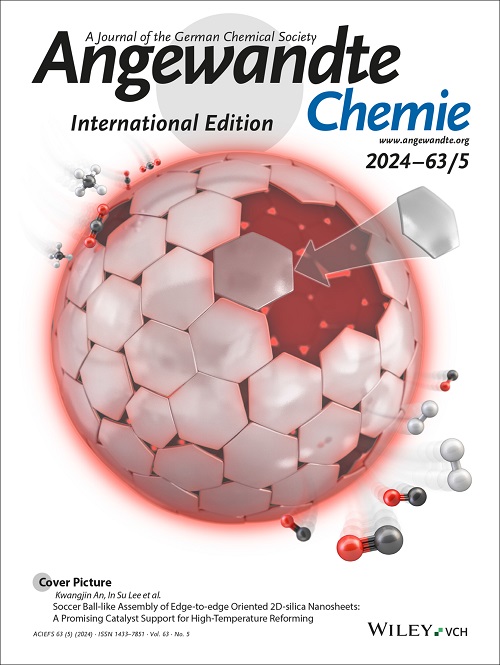In Situ Electrochemical Reconstruction of Cation-Vacancy-Enriched Ni@Ni2P Particles in Hollow N-Doped Carbon Nanofibers for Efficient Nitrate Reduction
IF 16.1
1区 化学
Q1 CHEMISTRY, MULTIDISCIPLINARY
引用次数: 0
Abstract
Electrochemical nitrate (NO3-) reduction to ammonia (NH3) under ambient conditions is promising to promote the artificial nitrogen cycling. Despite the development of transition metal-based catalysts, their incident in-situ electrochemical reconstruction always leads to the ambiguity of veritable active sites and reaction mechanisms. In this work, we report an approach to encapsulate Ni@Ni2P particles with cationic Ni vacancies in hollow N-doped carbon nanofibers (designated Ni@Ni2-xP@N-CNFs) for electrocatalytic NO3- reduction to NH3 and have investigated their surface reconstruction and reaction mechanisms using various in-situ electrochemical characterizations and theoretical calculations. Specially, the regulation of cationic Ni vacancy concentration in the three defective Ni@Ni2-xP@N-CNFs catalysts leads to the 3.92-fold NH3 yield rate difference at –0.2 V versus RHE. During the electrocatalytic reaction process, new amorphous Ni(OH)2 and NiOOH species form on the surface of Ni@Ni2-xP@N-CNFs and the stable amorphous Ni(OH)2 species benefits the generation of more active hydrogen (*H) for hydrogenation with NO3-. This is further verified by the different reaction rate-determining steps on the pristine and reconstructed defective catalysts. Integration of the optimized defective catalyst as cathode into a stable aqueous Zn–NO3- battery provides high power density and Faraday efficiency for NH3.求助全文
约1分钟内获得全文
求助全文
来源期刊
CiteScore
26.60
自引率
6.60%
发文量
3549
审稿时长
1.5 months
期刊介绍:
Angewandte Chemie, a journal of the German Chemical Society (GDCh), maintains a leading position among scholarly journals in general chemistry with an impressive Impact Factor of 16.6 (2022 Journal Citation Reports, Clarivate, 2023). Published weekly in a reader-friendly format, it features new articles almost every day. Established in 1887, Angewandte Chemie is a prominent chemistry journal, offering a dynamic blend of Review-type articles, Highlights, Communications, and Research Articles on a weekly basis, making it unique in the field.

 求助内容:
求助内容: 应助结果提醒方式:
应助结果提醒方式:


